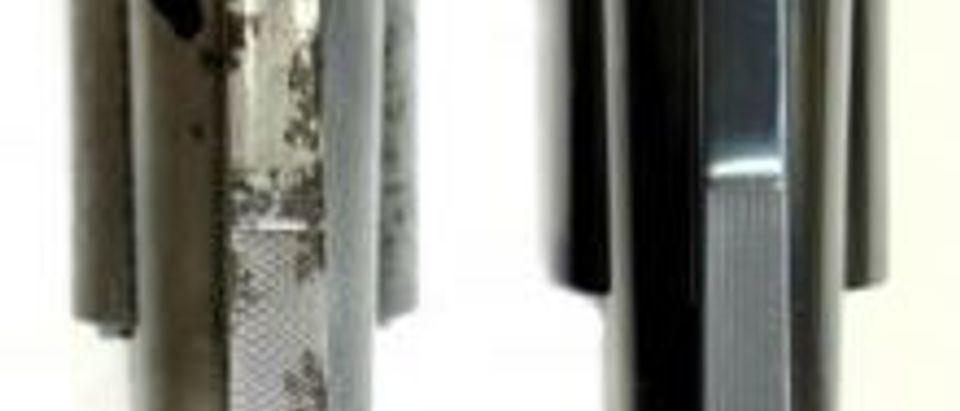By Nathan Vasick, Precision Bluing
Rust – enemy number one of your firearm. Even the smallest bit of moisture can lead to the rapid development of rust, which weakens metals on a cellular level and can lead to severe pitting more quickly than you might imagine, often in only a matter of days. So if rust attacks your gun, what can you do?
Steel treatment has existed for centuries, since well before the invention of firearms. Since the first irons were smelted in different locations around the world, the need to protect them from rust has been a principal concern, both in the kitchen and on the battlefield.
The smelting process can produce various carbon concentrations, depending on the ingredients in the smelter, and adding the carbon to wrought iron to create steel is a more reliable method that was perfected later on. Bluing was a natural progression of protecting that steel, and the treatments we use today, while more refined, carry on the ancient tradition.
If you know guns, you might have heard the term bluing before. Different forms of bluing have been used by gunsmiths and gun enthusiasts for centuries now to protect guns from wear and damage, but you might still be wondering what bluing actually is.
True bluing is an electrochemical conversion process, where the surface of the steel is converted to a form of controlled rust called Magnetite (FE3O4). This finish is extremely porous, therefore a water-displacing oil seal must be applied and maintained to prevent moisture from getting in.
While there are a few different types of bluing, the most durable forms are hot salt bluing and its predecessor, rust bluing. In the hot salt bluing process, after being beaded and polished, your firearm is soaked in an alkali salt solution at a temperature of around 300 degrees Fahrenheit.
The first step of the process is removing all of the old finish and rust. To do this, the gun is most often put into a cabinet and blasted with a fine glass bead, which ensures not a speck of rust is left to undo the change. Afterwords, the firearm is polished to the finish of your choice.
The Matte Finish is the most durable, as it creates the most surface area, and also removes the shine, making it a prime choice for hunters. The goal of a Factory Finish is to make your gun appear as though brand new, and the High Polish – a 500 grit – is for those special pieces that will most likely only be on display as this is the least durable of the three options.
After a soak in the solution, the gun is removed, rinsed, and hung to allow any additional salts to leak out – we call this creep – before being cleaned, well oiled, wrapped, and returned to its owner. Rust Bluing can provide the best rust and corrosion resistance as the process continually converts any metal that is capable of rusting into magnetite, but as it’s a much more labor intensive process, hot salt bluing is often used instead.
By creating a watertight seal around the steel on your firearm, it will be able to withstand the elements for years to come. With proper care and maintenance, it can be passed down for generations. When it comes to maintaining your firearms or restoring damaged ones, bluing is always your best option.
Nathan Vasick is the staff media coordinator and content development manager for Precision Bluing, a family-owned business in North Carolina, for which he is the eldest son. He does freelance editing in his spare time. Nathan enjoys learning about the history of guns, hunting and target shooting. Click here to visit PrecisionBluing.com.


